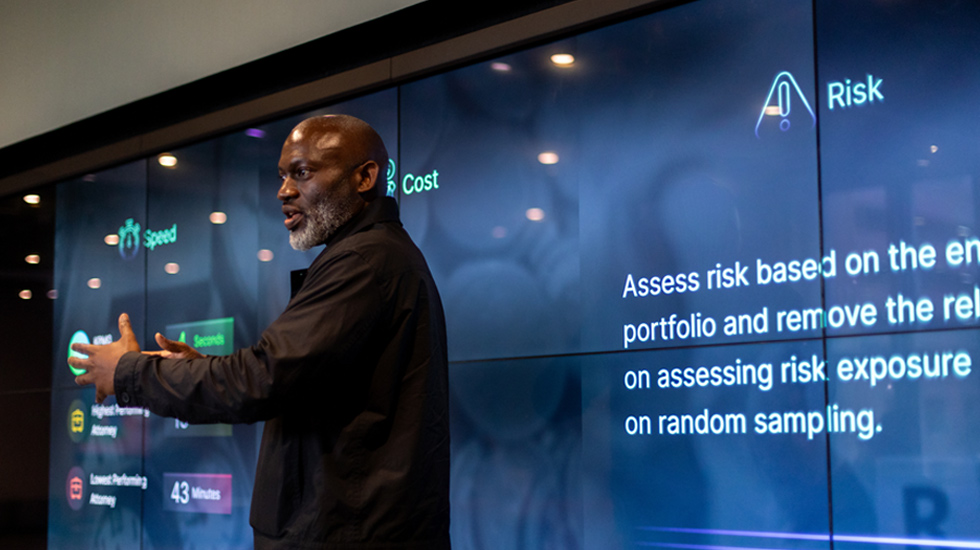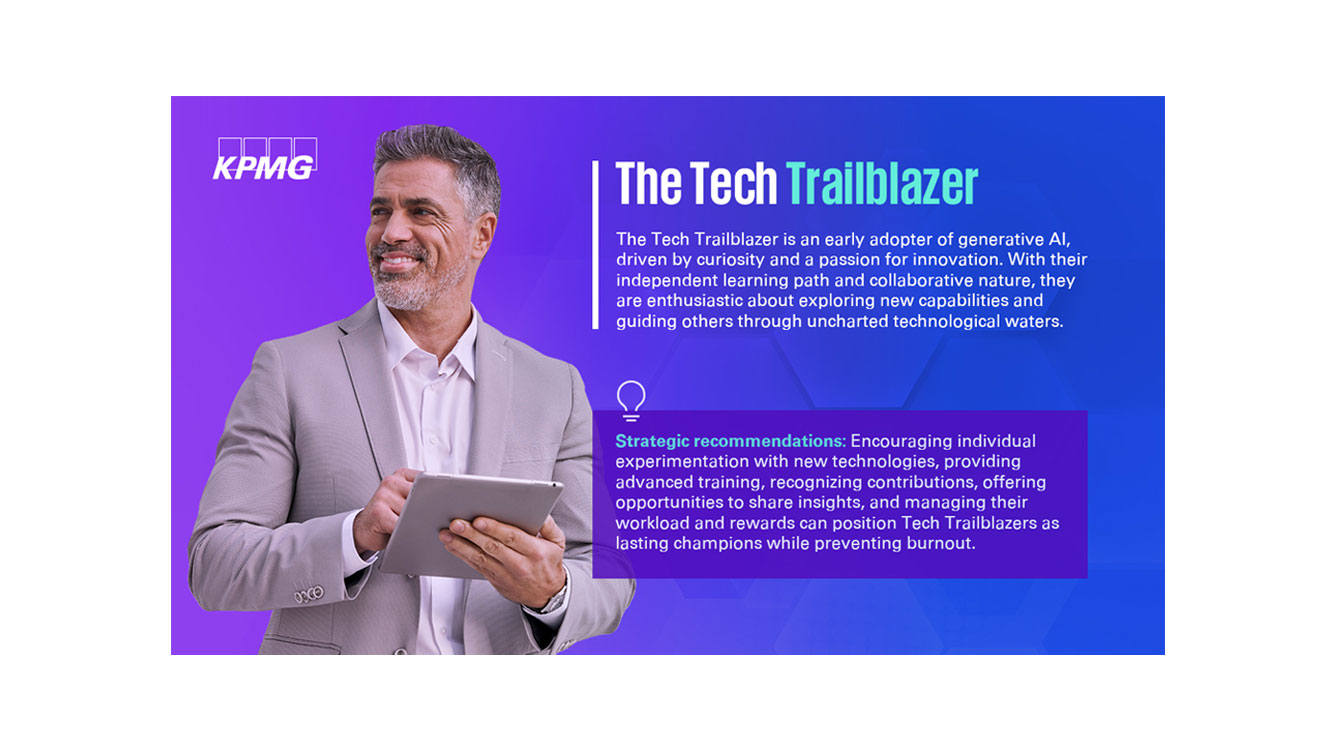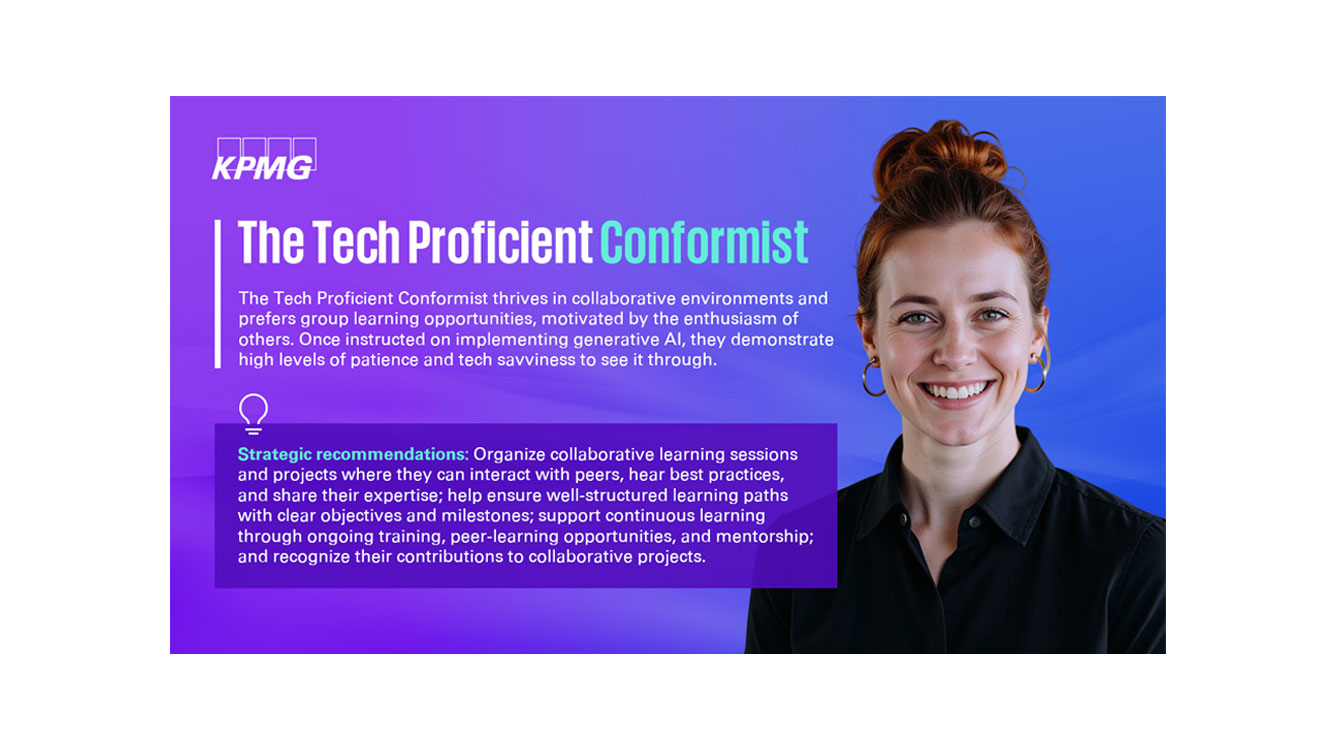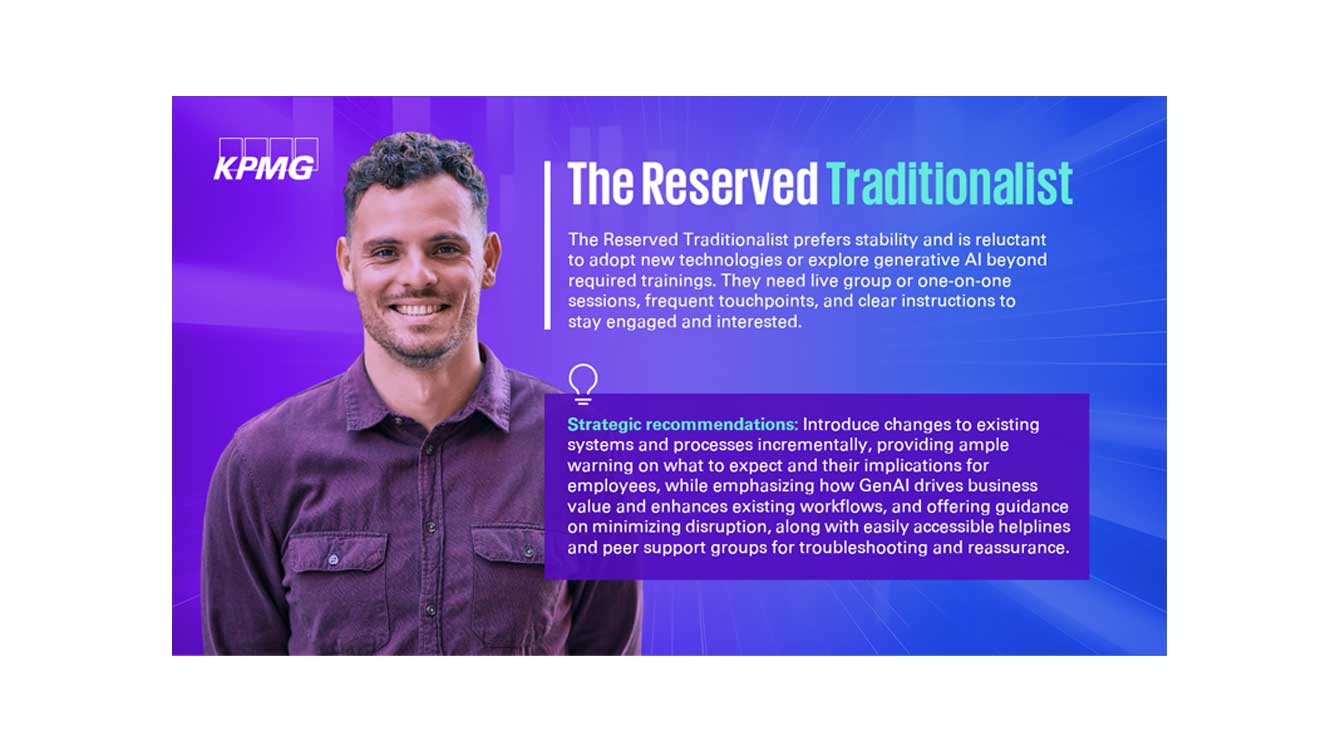At KPMG Ignition, we often look to the technology adoption curve to understand and set expectations around speed to adoption. Conceived by Everett M. Rogers, the original technology adoption curve posits that different groups of people adopt new technologies at a predictable rate over time, categorizing them as innovators, early adopters, early majority, late majority, and laggards across a normal distribution.4
Three factors lead us to suspect that the adoption curve is accelerated for generative AI:
- It is highly user-friendly and has seen rapid deployment across consumer and workplace technologies.
- 39.5% of US adults aged 18-64 had adopted generative AI within two years of its release, compared to 20% adoption for the internet within the same 2-year timeframe5
- This difference can be attributed to the portability of the technology and the ease at which one can experiment with the tool for free
- As of February 2025, 36% of occupations are using AI for at least 25% of their tasks6
- The generative AI industry has surged with widespread applicability across industries and functions.
- With the exception of personal services, at least 20% of workers from all major occupation groups use generative AI at work, including 22% of workers in “blue collar” jobs like construction, installation and repair, skilled production, and transportation and moving occupations7
- This widespread applicability of generative AI is reflected in the rapid growth of VC spending on AI, with AI-focused companies receiving 50.8% of global VC funding in Q4’248
- It’s not just a startup darling – it has been widely adopted and commercialized by major technology providers.
- OpenAI reported that 92% of Fortune 500 companies were using its services in April of 20249, 10
- This is much faster adoption than previous waves of AI technology. Less than 6% of firms had used pioneering AI technologies such as machine learning, computer vision, and natural language processing in 201711
Interestingly, adoption of generative AI is originating faster in the workplace than it is in consumer technology. A recent KPMG Ignition survey around consumer technology found that people who are employed are more likely to adopt and trust newer technologies, like generative AI, compared to their unemployed counterparts – and we see this trend across demographic factors.12
This is contrary to recent historical precedent. Since the rise of the internet in the 1990s, consumer markets have often driven expectations for technology use and user experience. Think about how video calling apps served as a precursor to workplace video conferencing tools; how consumer shopping experiences on e-commerce platforms have influenced workplace procurement systems; and how video and computer games and game-driven consumer apps have led to gamification in the design of workplace learning and development programs.
This flipped script in market patterns only magnifies the imperative for leaders to steward adoption in the workplace, as they cannot rely on consumer platforms to do the heavy lifting on training and application. It also points to an opportunity for businesses to innovate from within, developing new use cases and products that have application to improve efficiency and quality within their own organizations, as well as potential new revenue streams outside of them.







